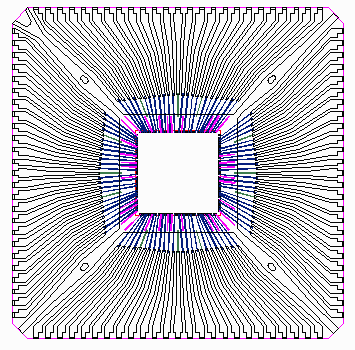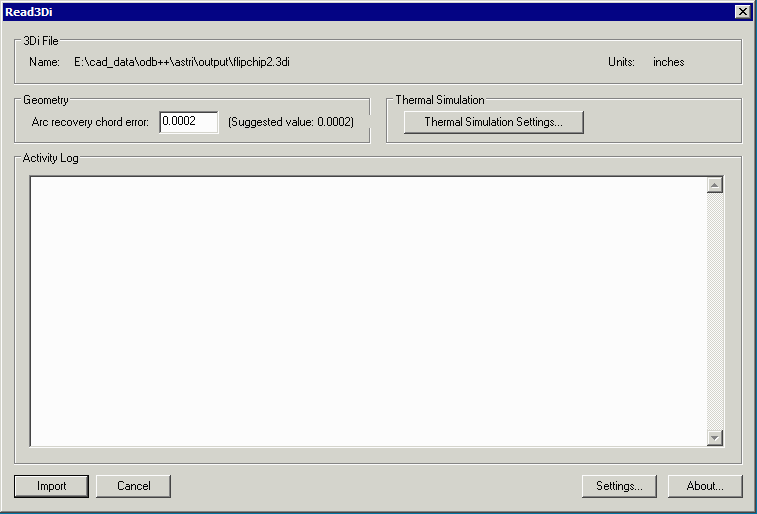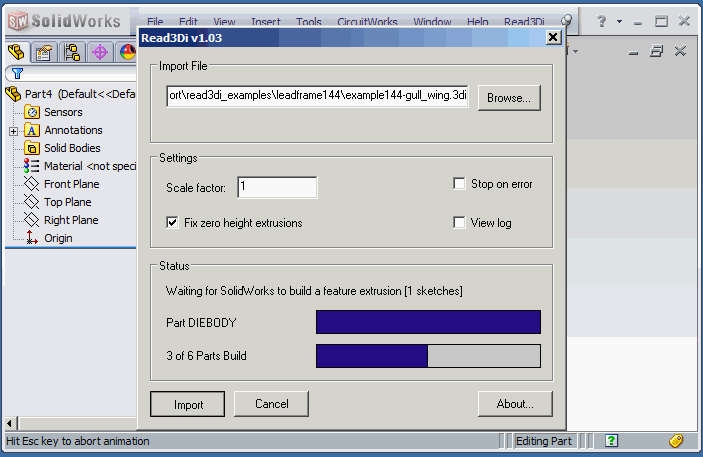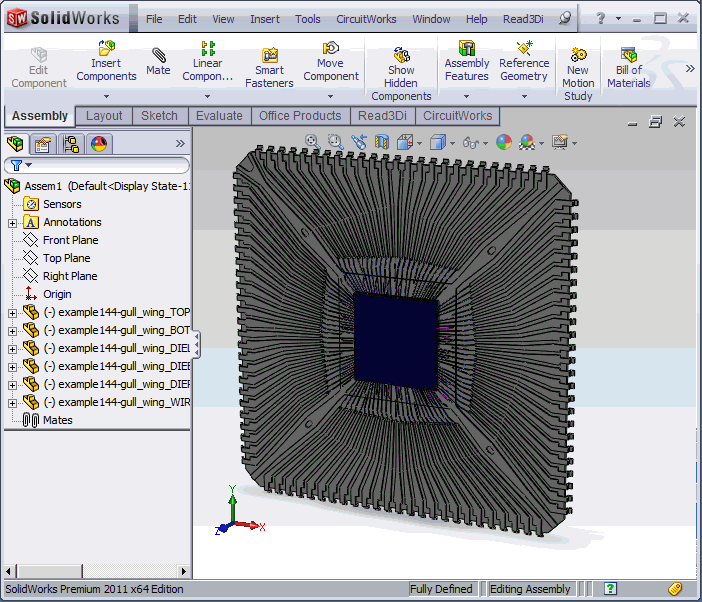LayoutGen
Artwork developed a special program, LayoutGen, specifically to take 2D data and extrude it in the Z plane into 3D data. In order to do this for leadframes LayoutGen has to do quite a lot of data preparation including:
Linking lines into closed polylines
Reversing the Polarity of the Data
Booleanizing data into legal shapes
Creating Z heights for each layer of data
Creating 3D wire profiles






